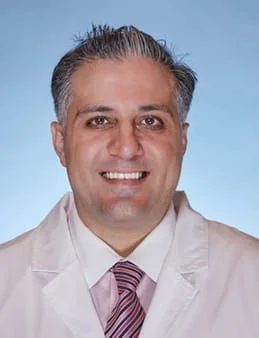Dr. Alex Eshaghian, MD, PhD
Encino, CA Med Spa Director
AE Skin
Alex Eshaghian, MD, PhD (“Dr. Alex”) was raised in Los Angeles, CA. He attended UCLA for college and graduated Magna Cum Laude with a degree in Biology in 1998. He received many accolades including Phi Beta Kappa, College Honors, Departmental Honors, Goldenkey International Honour Society, and Mortar Board National Honors Society.
Medical and Graduate School
In 2000, Dr. Alex moved to Nashville, TN to attend the Vanderbilt University School of Medicine’s distinguished Medical Scientist Training Program. With scholarships from the National Institutes of Health and the Canby Robinson Society, he graduated with an MD and a PhD. Dr. Alex completed his post-graduate training in Internal Medicine at the University of New Mexico School of Medicine in Albuquerque, NM. Dr. Alex has had clinical training in dermatology at Vanderbilt University, UC Irvine, USC, UCLA, University of New Mexico, Veteran’s Affairs Hospitals in Nashville, TN, Albuquerque, NM, Long Beach, CA, and Los Angeles, CA, as well as in various private clinics in southern California. He is also certified in the injection of Botulinum toxin and dermal fillers as well as in the use of lasers for cosmetic applications.
Research
Dr. Alex has done research for over a decade. His interest in research was sparked early in college when he worked in a nephrology lab. He then spent four years in a molecular biology lab in the Department of Chemistry and Biochemistry at UCLA under the direction of Harold G. Martinson, PhD. His dissertation in graduate school was in the Department of Cell and Developmental Biologyin the laboratory of James E. Sligh, MD, PhD where he studied genetic factors involved in photo-aging of the skin and in non-melanoma skin cancer. He has given oral and poster presentations at numerous conferences including the American Academy of Dermatology, Society for Investigative Dermatology, and American Society for Human Genetics. He has publications in the Journal of the American Academy of Dermatology, Journal of Investigative Dermatology, Free Radical Biology and Medicine, and Cardiovascular Toxicology. He is also a contributing author for the Textbook of Aging Skin.
Leadership
Dr. Alex has held a number of leadership positions including University of New Mexico School of Medicine Resident Voice committee member, Committee of Interns and Residents member, Dermatology Interest Group Association president and founding member, Executive Board member of Vanderbilt Hillel, Vanderbilt University MSTP Physician Scientist Speaker Series Committee member, Vanderbilt University Careers in Medicine Interest Group member, Vanderbilt University MSTP Student Advisory Committee member, and Vanderbilt University Dermatology Interest Group president. He has also participated in numerous service activities including Miles for Melanoma, Sun Protection Project, Camp Discovery, Links for Locks, and the Shade Tree Clinic.
At A E Skin, Dr. Alex is translating his research in photo-aging to his clinical practice. His passion is to prevent signs of aging in the skin to make patients look and feel their best.
Publications
Jandova J, Eshaghian A, Shi M, Li M, King LE, Janda J, Sligh JE. 2011. Identification of an mtDNA mutation hot spot in UV-induced mouse skin tumors producing altered cellular biochemistry. J Inves Dermatol. PMID: 22011905.
Eshaghian A, Kim J, Sibbit WL, Zlotoff BJ. 2010. JAAD Grand rounds quiz. Chronic urticarial eruption. J Amer Acad Dermatol. (63)5: 918-20. PMID: 20950745.
Norman KG, Eshaghian A, Sligh JE. 2010. Biomarkers in aging skin. In Textbook of Aging Skin. Springer-Verlag.
Monahan K, Eshaghian A, Dixon J. 2008. An unusual CO-conspirator in a case of acute coronary syndrome. Cardiovasc Toxicol. 8(1): 45-46. PMID: 18273709.
Eshaghian A, Vleugels RA, Canter JA, McDonald MA, Stasko T, Sligh JE. 2006. Mitochondrial DNA deletions serve as biomarkers of aging in the skin, but are typically absent in nonmelanoma skin cancers. J Invest Dermatol. 126(2): 336-44. PMID: 16374452.
Canter JA, Eshaghian A, Fessel J, Summar ML, Roberts LJ, Morrow JD, Sligh JE, Haines JL. 2005. Degree of heteroplasmy reflects oxidative damage in a large family with the mitochondrial DNA A8344G mutation. Free Radic Biol Med. 38(5): 678-83. PMID: 15683723.

